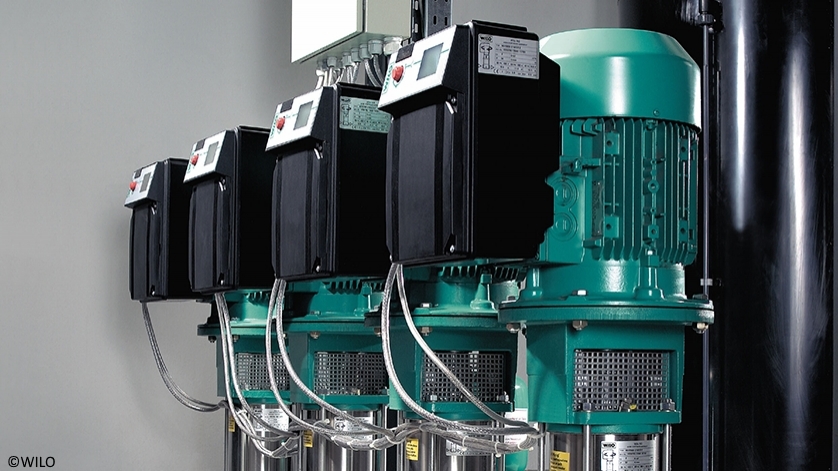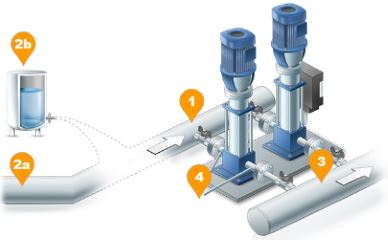
The invention of the pump itself was a major breakthrough for mankind. It significantly simplified the supply of drinking water. With growing demands for a stable water supply, largely free from pressure fluctuations, and at the same time increasing demands on the energy efficiency of buildings, pumps are now making their contribution as booster pumps. What their task is, how they function and what pressure switches do in the process is explained briefly and succinctly in this article.
What are booster pumps needed for?
A booster pump increases low water pressure and, with that, improves the flow rate. It provides an extra boost to bring the water pressure to the desired level. Booster pumps are often used in pipelines to increase the pressure and so to move the liquid along to the next pump, and also for pumping in residential houses or large commercial buildings. An expansion vessel can extend a pressure booster system. By using such an expansion vessel, the water pressure is additionally stabilised and thus improved.

Booster pumps in operation
The figure gives an overview of the different measuring points within a pressure booster system:
1 Input pressure – Pressure
2a Dry run protection – Pressure
2b Dry run protection – Level
3 Output pressure – Pressure
4 Pump performance – Differential pressure
How does a booster pump work?
Booster pumps are selected based on application demands. Rather than selecting one large pump, consider selecting multiple pumps with smaller horsepower. Booster pumps have an impeller that moves water that comes in through the inlet and exits through the outlet. A motor makes the impellers spin. The pumps differ in how they draw the water in and push it out. Some of them use a spinning propeller, others use an oscillating diaphragm or other pump principles.
What do mechanical pressure switches in booster pumps do?
The mechanical pressure switches in booster pumps are used for the direct control/monitoring of safety functions in order to protect pumps with insufficient input pressure against dry running. An example of this is the WIKA PSM-520 pressure switch.
How do mechanical pressure switches work?
The pressure element of the switch is a resilient bellow which works against a spring mechanism with an adjustable pre-load force. On the spring mechanism there is a contact arm for actuating the change-over switch contact. The switch is actuated as soon as the force generated by the pressure in the pressure element is greater than the set pre-load force.
Note
Further information on the various measurement solutions which we offer you for pumps and systems can be found on the WIKA website. If you have any questions, your contact will gladly help you.
Also read our articles
Mechanical pressure switches: How does one set the switch point?
Mechanical vs. electronic pressure switches: Functionality
Further blog posts on mechanical pressure switches


Thank you for this informative article on Booster Pump